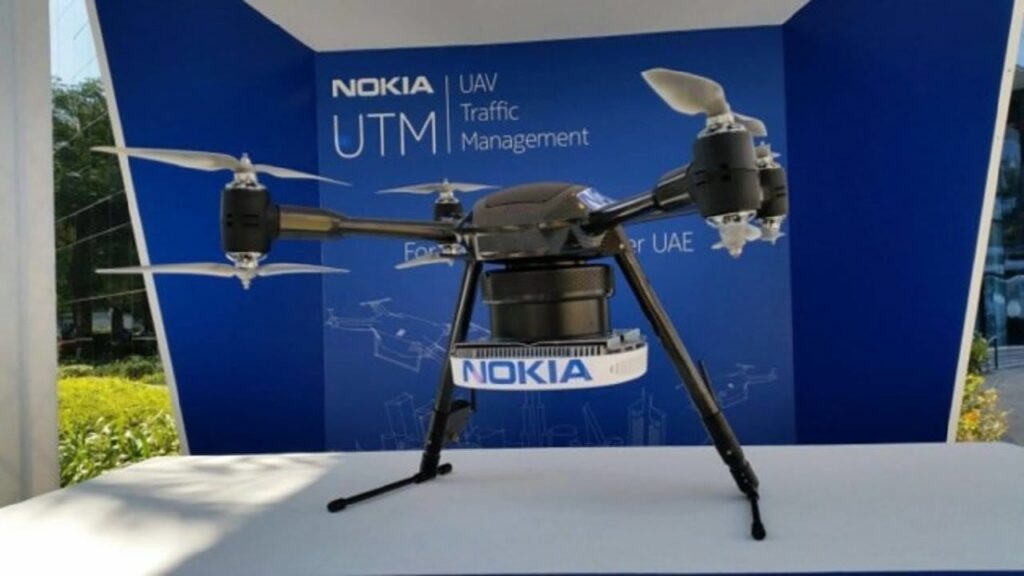How Nokia is using drones, AR and AI to speed up deployments

Despite their own high-tech nature, many of the 3G and 4G networks we use are currently managed through manually filled spreadsheets, complete with the errors and inaccuracies that accompany human-led processes.
For its next generation of 5G networks, telecommunications giant Nokia is hoping to vary the state of things. The Finnish company has announced that it’s now digitized all of its 5G network deployments globally, which the new processes it’s implemented are going to be utilized in every Nokia network rollout globally.
From drone-led site surveys to AI-powered tools which will identify defects within the network in real time: to manage and maintain the swarm of small cells, base stations and antenna arrays which will accompany future 5G networks, Nokia is betting big on digital tools.
Nokia’s president of worldwide services Sanjay Goel said: “Today, many operators suffer from a fragmented way in how their next-gen 5G networks are designed, built and managed. The adoption of automation, AI and therefore the digitalization of assets are vital steps during a CSP’s digital transformation journey to capture the complete potential of 5G.”
5G holds the promise of latest use cases that 3G and 4G can’t support: with faster networks, industrial automation will increase, computer game and augmented reality might finally get a killer app, gaming will reach new heights, and edge computing will boom.
Data flows are expected to leap as 5G is deployed, from 35 exabytes recorded in 2019, to 73 exabytes in 2022. As they underpin this busy ecosystem-to-be, therefore, networks will got to be more reliable than ever. And increasingly, providers have come to understand that spreadsheets won’t cut it.
Many experts have already anticipated that current inefficiencies in network management are likely to become problematic when it involves overseeing the complexity of 5G infrastructure. during a blog post earlier this year, Goel put it bluntly: “It’s clear that traditional methods have their limitations.”
This observation prompted Nokia to thoroughly digitize the deployment, management and maintenance of the company’s 5G networks. It starts from day one: site surveys are administered by drones, to capture high-definition and detailed 3D mapping of future locations, and generate data to assist engineers define the required materials for the build.
The goal is to create the location “first time right”, rather than physically sending engineers in to examine the location several times before starting the deployment.
Remote inspection is additionally prioritized throughout the site’s life cycle, both through drone technology and augmented-reality tools. On-site checks can this manner be administered by one person, who is in a position to attach , if needed, to a foreign expert fitted with an AR-enabled video collaboration tool – a way more efficient process that cuts costs and saves time.
All of the info generated is added to a digital database for the location . Visual and statistical online records feed into real-time dashboards that experts can access remotely to ascertain project information and key performance indicators.
Most importantly, all of the workflows generated by different parties performing on the build are integrated in one single platform called Nokia Delivery Platform (NDP). A cloud-based management application, NDP covers the entire life cycle of the network’s deployment, from planning and designing to testing and validation, through construction, commissioning and integration.
Bringing siloed processes together into one central platform could reap huge benefits for teams performing on network deployments.
The Finnish company’s commitment to digitization has already shown positive results. “We have over 100 customers worldwide and are delivering 100% of our projects digitally, replacing traditional ways of network rollouts through digitization and automation,” said Carlijn Adema, Nokia’s head of selling at Nokia Global Services. “To give some figures: Nokia’s digital deployment services mean 4G and 5G networks are up to 30% faster to plug , and installation quality is increased by 30%.”
Site visits, consistent with Nokia, have also decreased by a 3rd . The digital revolution promised by 5G networks is merely round the corner; but it seems that network providers have tons to realize from transforming their own procedures first.
